Click the title below to follow “Traditional Chinese Medicine Health and Wellness Magazine”
“Three branches and five leaves, facing the sun and the shade, seeking me, the linden tree is sought.” This poem, “A Tribute to Ginseng by the Koreans,” is the earliest poem about ginseng in China, recorded in the “Record of Famous Physicians” by the Northern and Southern Dynasties physician Tao Hongjing.
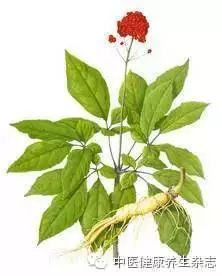
Listen to the National Medicine Master talk about ginseng
Jin Shiyuan has been engaged in traditional Chinese medicine for 75 years and is known in the industry as the “living pharmacopoeia.” He is a representative inheritor of the national intangible cultural heritage “Traditional Chinese Medicine Processing Techniques.”
▌What does the best ginseng look like?
In ancient times, ginseng referred to wild varieties (wild mountain ginseng). Wild mountain ginseng grows for varying lengths of time, with older specimens being of higher quality. Due to its preference for dense forests, it is distributed very sparsely, making it difficult to find. Additionally, due to years of harvesting, the yield is very low, resulting in high prices and making it a rare and precious item.
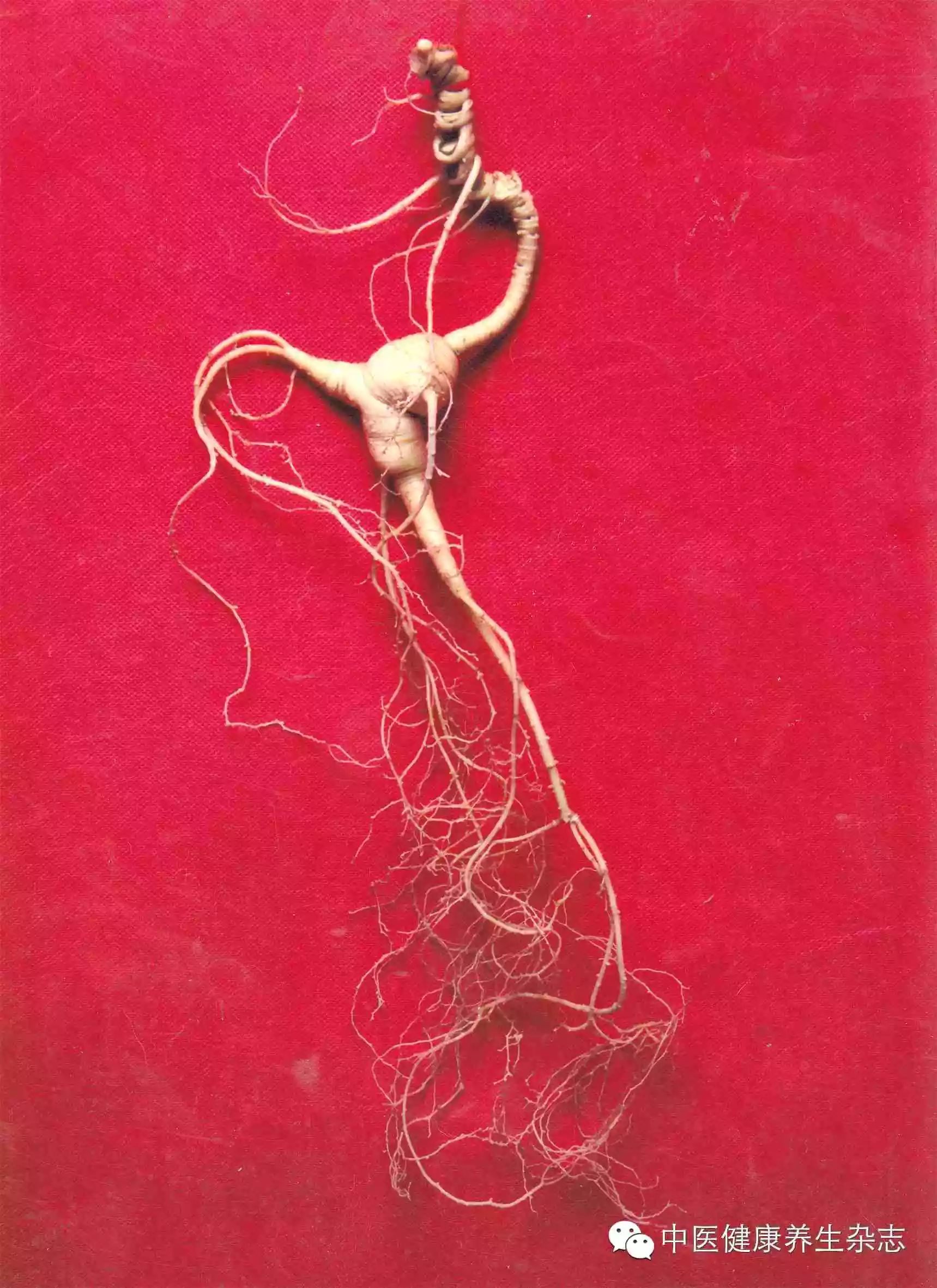
A humorous poem vividly describes the typical characteristics of wild ginseng: “The reed flower bowl is dense with round reeds, drooping on both sides with hairy bristles, short and stout body with spiral rings, tight skin smooth and shiny, two chicken legs in a figure-eight shape, sparse long roots with dense tubers, these are the characteristics of mountain ginseng.” This poem summarizes the eight characteristic parts of wild mountain ginseng: reed and bristles, body and legs, skin and rings, roots and points, which are used to distinguish pure mountain ginseng from other types of ginseng.
▌Which type of ginseng is closest to wild mountain ginseng?
Currently, wild mountain ginseng is very hard to find in the market, and the type most similar in efficacy is forest ginseng. Forest ginseng is semi-cultivated and semi-wild. Seeds are transplanted into deep mountain forests to grow naturally, generally taking over 20 years to harvest, so the yield of forest ginseng is also very low. The efficacy of forest ginseng is essentially not much different from that of ginseng. Forest ginseng also has reeds and bristles, body and legs, skin and rings, roots and points, but these eight parts grow irregularly; for example, its reeds are generally very short, and ginseng cannot have round reeds before 20 years; some legs grow together, while others twist; and there are more root hairs.
▌What specific benefits does ginseng have?
The “Shennong Bencao Jing” describes ginseng: “Ginseng primarily supplements the five organs, calms the spirit, stabilizes the soul, stops palpitations, eliminates evil qi, brightens the eyes, enhances intelligence, and prolonged use lightens the body and extends life.” The famous Ming Dynasty TCM scholar Gong Juzhong listed it as the first item in his “Song of Medicinal Properties”: “Ginseng is sweet, greatly supplements original qi, quenches thirst and generates fluids, and regulates nutrition and defense.” 【Greatly Supplementing Original Qi】 Original qi is derived from the kidney essence inherited from parents, developed postnatally, and formed by the combination of “qi” generated from inhaling clear yang qi from the air and the food qi consumed. Ginseng is the “King of Qi Supplementation.” 【Restoring Pulse and Stabilizing Collapse】 Collapse syndrome is a dangerous pathological condition in diseases, referring to the significant depletion of yin, yang, qi, and blood during the disease process, leading to life-threatening conditions. Ginseng can rescue from critical situations. 【Supplementing the Spleen and Nourishing the Lungs】 Li Dongyuan pointed out: “Ginseng can supplement the qi of the lungs; when lung qi is abundant, the qi of all organs is also abundant, as the lungs govern all qi.” 【Generating Fluids and Calming the Spirit】 The “Bencao Huiyan” refers to ginseng as “a medicine that assists essence and nourishes the spirit,” specifically addressing palpitations, anxiety, forgetfulness, insomnia, etc., and has the effects of benefiting qi and nourishing blood, calming the heart and spirit.
▌Can everyone consume ginseng?
The Chinese government has clearly recognized that ginseng is not only a medicine but can also be used as food. However, as a medicine and health supplement, there are dosage restrictions: generally, the medicinal dose of ginseng is 3 grams to 9 grams, while as a health supplement, it is 1 gram to 2 grams, which is the daily amount.
The saying “eating ginseng causes heat” is widely accepted. However, this view is biased. Elder Jin pointed out that the causes of heat and nosebleeds can be attributed to three factors: first, inappropriate dosage; second, unsuitable individuals, as young people and children with strong bodies do not necessarily need to consume ginseng; third, inappropriate seasons, as ginseng is generally suitable for supplementation in spring and winter. In summer, when it is already hot, consuming highly tonic medicines may lead to heat and nosebleeds.
Methods of consuming ginseng
【Sublingual】 Cut into thin slices or powder, place in the mouth, and slowly dissolve and swallow. Suitable for the elderly, taking about 1 gram to 3 grams daily. 【Stewing】 There is a famous ancient and modern recipe called “Single Ginseng Soup,” which consists of ginseng alone. The method is to take about 10 grams of ginseng, cut it into thin slices, place it in a bowl, add an appropriate amount of boiling water, cover it, and then stew in boiling water for 2 to 3 hours. It is important to add boiling water to prevent the pot from drying out. For critically ill patients, ginseng can be decocted to rescue them.
【Infusing in Alcohol】 Ginseng wine is a nourishing delicacy. The method is to take about 10 grams of ginseng, cut it into small pieces or slices, and soak it in 500 grams of white wine. Generally, it can be consumed after soaking for 4 to 5 weeks, with a dosage of 10 milliliters to 15 milliliters, 2 to 3 times a day. Ginseng wine can replenish original qi and warm the blood vessels, suitable for patients with weak yang qi and cold body constitution. However, those with yin deficiency and excessive heat, or night sweats and tidal fever should avoid drinking it.
【Making Soup】 Take one old hen, clean and remove the internal organs. Place 5 grams to 10 grams of ginseng, 10 grams of dried tangerine peel, and 5 grams of sand ginger into the hen’s cavity, tie it up, and place it in a clay pot with an appropriate amount of water, simmering slowly until the meat is cooked and the soup is rich. Drinking the soup and eating the meat is effective for those with chronic illness, postpartum qi and blood deficiency, various types of anemia, and certain blood diseases with insufficient hematopoietic function.
【Cooking Porridge】 Take 3 grams of ginseng, simmer in water for 20 minutes, then add an appropriate amount of rice and cook until the porridge thickens. This can replenish qi and blood, strengthen the spleen and stomach, especially suitable for elderly individuals with weak digestive functions. Regular consumption of ginseng porridge has good preventive and therapeutic effects on myocardial malnutrition, coronary artery sclerosis, angina pectoris, and arrhythmia.
Choosing Ginseng Based on Syndrome
▌Ginseng
Currently, the most common types of ginseng on the market include ginseng, red ginseng, ginseng tails, Korean ginseng, American ginseng, and Acanthopanax (Siberian ginseng), all belonging to the Araliaceae family, with their roots and rhizomes used medicinally. Due to differences in variety, origin, and processing methods, they are categorized into the aforementioned types. In a narrow sense, ginseng often refers to cultivated “garden ginseng” and “forest ginseng.” Garden ginseng is usually harvested in autumn, cleaned, trimmed, and then sun-dried or baked, which is the commonly referred to ginseng. Its medicinal properties are mild, slightly bitter when chewed, and have a unique fragrance, often used for general weakness. In terms of medicinal properties, it is not very warming; when doctors prescribe ginseng, they usually refer to this variety. Some places call it white ginseng, which is actually yellowish-white and relatively hard.
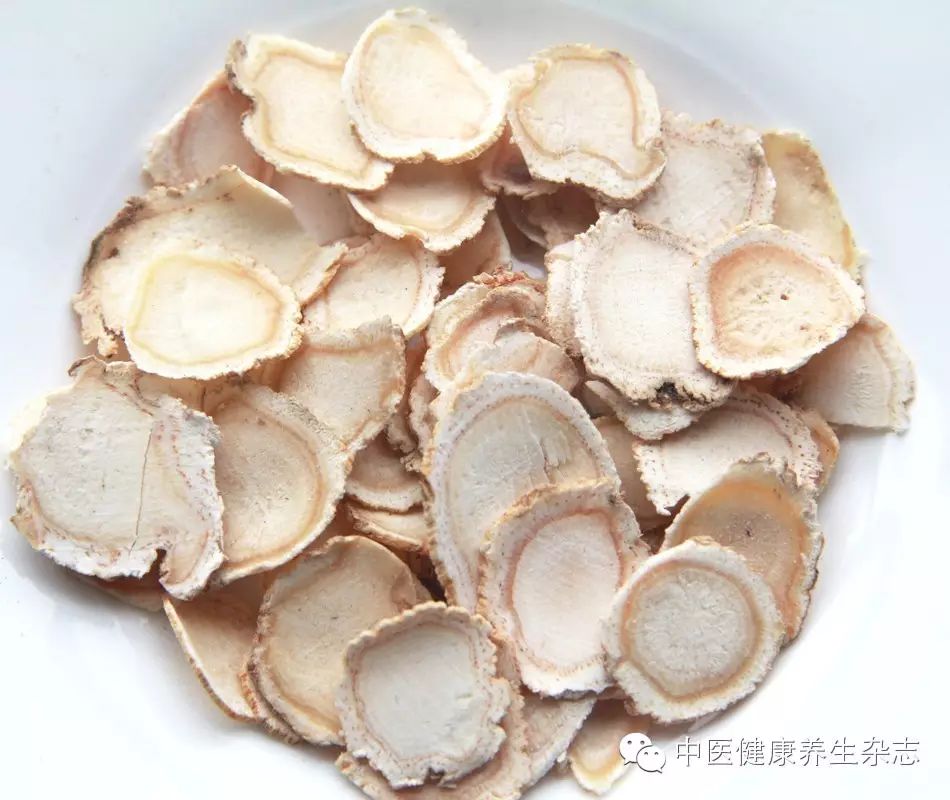
▌Red Ginseng
Red ginseng is made by washing harvested ginseng, trimming off small lateral roots and root hairs, steaming, and then drying. Its color is a beautiful reddish-brown, hence the name red ginseng, which is hard and brittle, with a horn-like fracture surface. Its medicinal properties are warmer, hotter, and drier than the former, with a stronger ability to supplement deficiency. It is suitable for those with physical weakness and cold, or severe cases of collapse and shock. Generally, it is not suitable for middle-aged and young people due to its warming nature, as it can easily cause “heat” and even nosebleeds. Nosebleeds caused by this medicine often occur with a gentle touch to the nose, or even spontaneously bleeding, with bright red blood.
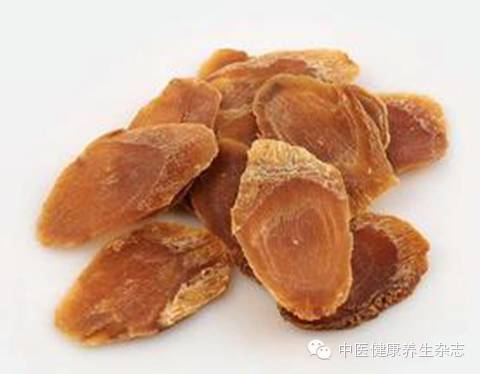
▌American Ginseng
This variety is primarily produced in the United States and Canada, hence the name American ginseng. Importers often refer to it as “flower flag ginseng.” Currently, most of the American ginseng on the market is cultivated in Canada. According to TCM’s explanation of medicinal properties, it can vary based on origin; North America has a high latitude and cold climate, thus its efficacy is to supplement deficiency and support weakness, but its properties are relatively cool, suitable for patients with both qi and yin deficiency and those with weak constitutions but exhibiting heat signs. Clinically, it is often used for high fever, heat stroke, or those working in high-temperature environments, sweating profusely with yin fluids deficiency. It is not advisable for those with weak constitutions and cold stomach qi to consume it regularly.
It should be noted that the American ginseng grown in Jilin, Huairou in Beijing, Shandong, and Hanzhong in Shaanxi is the same variety as imported American ginseng, and the quality of these domestic American ginseng is also good.
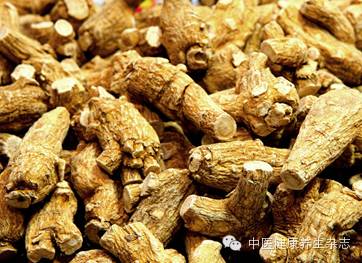
▌Ginseng Tails
When harvesting ginseng in autumn, the lateral roots and root hairs are removed, cleaned, dried, and tied into small bundles, referred to as white ginseng tails; those that are steamed and dried at low temperatures are called red ginseng tails. It is theoretically believed to have less potency and is cheaper, with effects similar to ginseng. From a chemical perspective, the effective components of ginseng are its saponins, which are mainly concentrated in the skin of the root—i.e., the outer skin. The thinner the root, the larger the relative surface area of the skin, and the higher the saponin content. In this sense, it is a cost-effective substitute. However, on the other hand, the ginseng used in TCM cannot be equated with just saponins, but includes all active components of ginseng. Therefore, using only ginseng tails to replace ginseng for treating diseases may be insufficient.
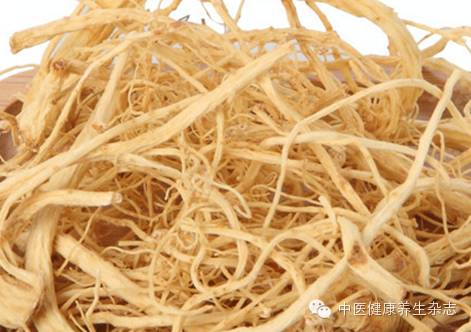
▌Korean Ginseng
Korean ginseng is named after the ancient name for the Korean Peninsula, with the most famous being that produced in South Korea. In fact, its source plant is the same as Chinese ginseng, but the differences lie in the origin and processing methods, with its shape differing from ginseng, often pressed into irregular column-like shapes, with broad shoulders and some double-headed roots, and thick lateral roots. Its properties are generally considered hot and dry, with strong warming and tonifying effects, though this may be somewhat exaggerated.
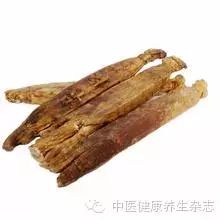
▌Acanthopanax
The last one is Acanthopanax (also called Siberian ginseng), which is abundantly produced in Northeast China. It belongs to the same family and genus as ginseng but is a different species. Its medicinal parts are the roots and rhizomes or stems, with the main active components being various glycosides. Its functions include benefiting qi, strengthening the spleen, calming the spirit, and supplementing the kidneys, used for spleen and lung qi deficiency, physical weakness, loss of appetite, chronic cough with wheezing, insomnia, and vivid dreams. The commercially available medicine named Acanthopanax tablets is made from Acanthopanax extract, with a dosage of 2 to 3 tablets taken twice a day.
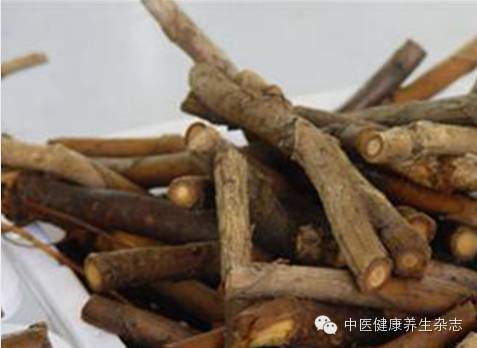
Source: “Traditional Chinese Medicine Health and Wellness” magazine, September 2015 issue
Written by: Chai Yu, Wang Shimin
Edited by: Liu Yongbin
Copyright Statement
Respect knowledge and labor, please retain copyright information when reprinting. The copyright of the content published on this platform belongs to the relevant rights holders. If there are any improper uses, please feel free to contact us.
Scientific ● Authoritative ● Practical ● Original
Traditional Chinese Medicine health has become popular, but often there are many conflicting opinions.
With an increase in health information, where should we go?
Follow us
Health questions, you ask, we answer
“Traditional Chinese Medicine Health and Wellness” magazine (Postal Publication Number: 80-107)
Under the administration of the State Administration of Traditional Chinese Medicine
Sponsored by the China Traditional Chinese Medicine Newspaper
We recommend true health experts and genuine health methods for you.
Striving to become a guiding lighthouse in the field of Traditional Chinese Medicine health and wellness.
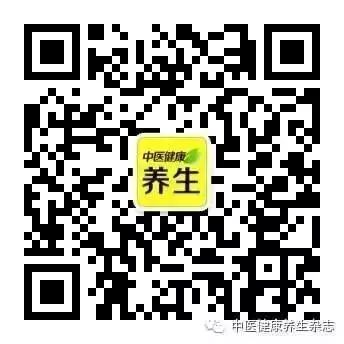 Long press to recognize the QR code and follow us
Long press to recognize the QR code and follow us

